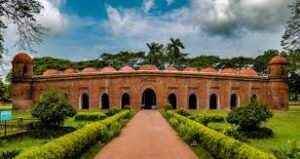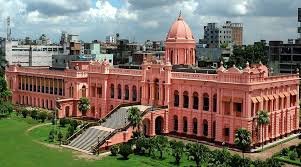Introduction
As a travel expert with over 12 years of experience, I’ve explored countless destinations, but the Sixty Dome Mosque in Bagerhat, Bangladesh, stands out as a true gem. This architectural marvel, part of the UNESCO-listed Mosque City, captivates with its rich history and stunning design. In this article, I’ll guide you through its past, unique features, and practical tips to make your visit unforgettable. Whether you’re drawn to history, architecture, or cultural exploration, this site offers something special.
What You’ll Learn
The history behind this iconic structure
Its distinctive architectural elements
Why it’s a UNESCO World Heritage Site
How to reach and explore the site
Nearby attractions to enhance your trip
Tips for sustainable travel and photography

History
In the mid-15th century, Khan Jahan Ali, a Turkish saint-general and governor of the Sundarbans, founded Khalifatabad, now known as Bagerhat. He transformed this once-wild region into a thriving hub by building roads, bridges, and over 360 places of worship. The Sixty Dome Mosque, constructed between 1442 and 1459 CE, served as a place of prayer, madrasah, and assembly hall. Its creation reflects the Bengal Sultanate’s cultural and religious influence, making it a cornerstone of the region’s heritage. Khan Jahan Ali’s vision turned this area into a vibrant centre, and his legacy endures in the town’s historical sites.
Architecture
The Sixty Dome Mosque is a masterpiece of Tughlaq architecture, characterized by thick, tapered brick walls. Despite its name, it features 81 domes—77 small ones in seven rows of eleven, plus four larger ones at the corners—supported by 60 slender stone columns. The prayer hall, measuring 160 feet by 190 feet, can hold up to 2,000 worshippers. It has 11 arched doorways on the east, seven each on the north and south, and one on the west, with four circular towers at the corners. Intricate terracotta carvings and 10 mihrabs (prayer niches) adorn the interior, showcasing exquisite craftsmanship that leaves visitors in awe.
Significance
This historical site is a UNESCO World Heritage Site, recognized under Criterion (iv) for its outstanding example of early Muslim architecture in Bengal. The Mosque City of Bagerhat, with its 360 structures, illustrates a significant stage in human history, blending Islamic influences with local materials like baked bricks. The complex highlights the establishment of a Muslim colony in the Sundarbans, showcasing the region’s cultural and religious importance during the 15th century. Its preservation offers a window into the Bengal Sultanate’s architectural achievements.
Visitor Information
Location
The Sixty Dome Mosque is located in Bagerhat, Khulna Division, about 4.8 km from the town centre and 320 km from Dhaka.
How to Get There
By Car: A 2-hour, 24-minute drive from Dhaka (220 km) costs $15–$22.
By Train: Take a train from Dhaka to Khulna (3 hours 45 minutes, $1–$22), then a local bus or rickshaw to Bagerhat (50 km).
Local Transport: From Bagerhat bus stand, hire a rickshaw or CNG auto-rickshaw (5–7 km).
Opening Hours
Open daily from 10:00 AM to 6:00 PM (9:00 AM–5:00 PM in winter).
Entry Fees
Bangladeshi: 20 TAKA
SAARC: 100 TAKA
Foreign: 200 TAKA
Best Time to Visit
Visit from October to March for cooler, drier weather. Avoid the monsoon season (June–September) due to heavy rains.
Tips
Wear comfortable shoes for walking.
Bring water, especially in warmer months.
Dress modestly to respect the religious site.
Expect crowds on weekends, as the area attracts over 300,000 visitors annually.
Nearby Attractions
Bagerhat offers more to explore:
Singar Mosque: Features unique architectural details.
Nine Dome Mosque: Located near Khan Jahan Ali’s tomb, known for its nine domes. Learn more about it in my Nine Dome Mosque Guide.
Tomb of Khan Jahan Ali: A pilgrimage site for locals.
Bibi Begni Mosque: A charming single-domed structure.
Bagerhat Regional Museum: Displays artifacts from Khalifatabad’s history.
Sundarbans: A UNESCO-listed mangrove forest about 100 km away, perfect for eco-tourism enthusiasts. Check out my Sundarbans Travel Tips.
Cultural and Historical Context
Khalifatabad, now Bagerhat, was a thriving city during the Bengal Sultanate, thanks to Khan Jahan Ali’s efforts. After the Sultanate’s decline, the city fell into disrepair until its rediscovery in the 20th century. Today, with a population of about 50,000, Bagerhat remains a cultural hub, drawing visitors to its historical treasures. The mosque’s role as a community and religious centre underscores its enduring significance.
Preservation and Conservation
The Department of Archaeology oversees the site’s upkeep, using traditional lime and mortar for repairs. Challenges like soil salinity and climate change threaten the brick structures, but ongoing efforts ensure their preservation. Supporting these initiatives helps maintain this heritage for future generations.
Traveler Reviews and Experiences
Visitors often praise the mosque’s grandeur, with one saying, “The domes create a mesmerizing sight!” However, some note that the interior needs better maintenance, with debris in certain areas. Be cautious of locals taking photos without consent, as mentioned in reviews. Overall, it’s a top destination for those exploring Bangladesh’s heritage.
The Legend of Khan Jahan Ali
Khan Jahan Ali is a legendary figure in Bangladesh, revered as a saint with miraculous powers. Local stories claim he tamed Sundarban tigers and built the mosque overnight with supernatural aid. While likely exaggerated, these tales highlight his revered status. His tomb, a pilgrimage site, draws devotees seeking blessings, adding a spiritual dimension to your visit.
Sustainable Travel to Bagerhat
Travel responsibly with these tips:
Use public buses or trains to reduce emissions.
Stay in local guesthouses to support the community.
Try local dishes like fish curry to boost the economy.
Respect the site by avoiding littering or touching structures.
Buy souvenirs from local artisans to preserve traditional crafts.
For more eco-friendly travel ideas, see my Eco-Friendly Travel Guide.
Photography Tips at the Mosque
The mosque is a photographer’s dream. Visit during golden hour (early morning or late afternoon) for soft lighting. Use a wide-angle lens to capture the full structure and focus on details like terracotta carvings. Include people for scale, but ask permission first. If allowed, drone photography offers stunning aerial views. Respect other visitors while shooting.
A Day Trip Itinerary
Start your day at 8:00 AM with a visit to the Sixty Dome Mosque, spending two hours exploring its architecture. Next, head to the Nine Dome Mosque and Khan Jahan Ali’s tomb (1 hour). Enjoy lunch at a local restaurant and try fish curry or pitha. Visit the Bagerhat Regional Museum in the afternoon (1 hour), then relax by a nearby pond. End your day with a sunset view of the mosque.
Bagerhat’s culture is vibrant, with festivals like Eid drawing locals to the mosque. Try local dishes like hilsa fish curry or pitha (rice cakes) at nearby eateries. Visit local markets for handmade crafts and supporting artisans. These experiences enrich your trip and connect you with the community’s traditions.
Conclusion
The Sixty Dome Mosque is a symbol of Bangladesh’s rich heritage. Its 81 domes, historical significance, and cultural depth make it a must-visit. Plan your trip, respect local customs, and explore nearby sites for a fulfilling experience. Whether you’re a history enthusiast or a curious traveller, this site will leave you inspired.
FAQs
How many domes does it have?
81 domes—77 small and four large.
Who built it?
Khan Jahan Ali, governor of the Sundarbans.
Why is it UNESCO-listed?
It showcases early Muslim architecture in Bengal.
What is the best time to visit?
October to March for pleasant weather.
Restrictions for non-Muslims?
None, but dress modestly.




